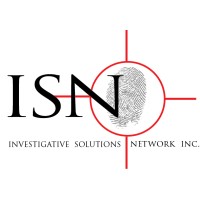
When we think of workplace investigations, our minds often jump to the worst case scenario. There has been a serious incident of violence or harassment, and so suddenly an employer’s duty under the Occupational Health and Safety Act requires them to conduct a full and thorough investigation.
While this is often the case, there are also many occasions where other sorts of workplace conflict arises that warrants some form of investigation, even if it takes on a subtler form of inquiry. When you employ a conflict resolution approach to your investigation, you are able to uncover and solve the issues lurking beneath the surface that could be detrimental if left untreated.
How do investigations support workplace conflict resolution? Let’s look at an example.
Jessica (not her real name) tells you, her HR representative, during a routine check-in that she feels as though she is being targeted by her new manager, Jamal. There has been a recent restructuring on the team, and Jamal has been moved to manage a different division where he had not worked previously. He had shown great leadership in leading his previous team, so this transition appeared seamless on paper.
To date, Jessica is the first employee who has mentioned any issues, but she has listed several incidents where she feels that Jamal has been micromanaging her, has been belittling her work, and has been overly critical of her performance where her previous manager showered her with praise. In short, she feels as though she’s being singled out. You immediately sense that the matter warrants further investigation.
You begin your investigation by talking to several of Jessica’s team members, as well as Jamal, only to learn that hers is not the only conflict on that team. Several employees note that the change in leadership has been jarring, and while their previous manager took a more collaborative approach, Jamal has instead emphasized individual achievements.
The result has been the development of a highly competitive environment, with employees often nervous that they will not reach Jamal’s high standards. As a result, the former cooperative spirit of that team has been replaced by fierce competition, suspicion, and mistrust. Employees say they now feel that they have been ‘pitted against each other’ in an effort to succeed.
When you subsequently meet with Jamal to discuss these issues, you learn that he’s been unaware of any of these concerns, and is deeply upset that the team feels this way. He has previously come from highly competitive environments, and did not realize that such an approach with this team would instead leave them feeling disoriented and disconnected.
In short, you’ve now uncovered multiple layers of conflict: conflict between Jamal and his direct reports, and conflict between the team members themselves in a competitive effort to meet these new expectations. Thankfully, you’ve managed to catch the problem before you began to see a mass exodus from that team – which would have had broader ramifications throughout the company.
The answer, of course, is based within the core principles of conflict resolution. Jamal can receive additional management training that instructs him on working within various environments, and the team can receive additional training on handling conflict and dispute resolution. With solid training in place, and more open and constructive dialogue, it is not too late to ‘right the ship.’
This scenario is not an uncommon one, but it emphasizes the importance of conflict resolution when it comes to workplace investigations. So often workplace conflict is at the heart of any matter that rises to a level that requires investigation. Bad actors aside, so many incidents are based on poor communication, an absence of training, or a failure to follow policies and procedures.
Approaching your investigations with a view towards conflict resolution allows you not only to see the immediate situation at hand, but to focus on how to resolve any underlying issues and craft long-term solutions.
Conflict resolution should not be a stopgap approach. It allows anyone conducting an investigation to look towards the future, and implement tools such as mediation, environmental scans, cultural assessments, and other tools within the HR professional’s toolkit.
This method allows any HR professional to become a better investigator. It invokes a methodology that goes beyond simply following steps, and looks at the causes of the issues. Treating these issues as ones that can and must be resolved not only helps rectify a specific problem, but creates a healthier workplace throughout.
Presented by

Archives
Categories
- Attraction and Recruitment
- Benefits
- Celebrating Success and Recognition
- Change Management
- Coaching and Conflict Resolution
- Culture
- Diversity, Equity and Inclusion
- Emotional Intelligence
- Employee Engagement
- Employee Performance
- Labour Disruption
- Leadership
- Mentoring
- OMHRA activities
- OMHRA Events
- Psychological health and safety of the HR professional
- Recruitment
- Recruitment and Retention
- Retention
- Uncategorized
- Unique ideas for recruiting in a tight job market
- Wellness
Recent Posts
- Alleviate the Stress of Conducting a Workplace Conflict Investigation
- Bridging Differences: 5 Techniques for Building Conflict Competence
- Full Brain Conflict Approach
- Finding Meaningful Modified Work through Understanding Job Demands
- From Office Spats to Success Stories: How HR Can Create Growth Out of Conflict

